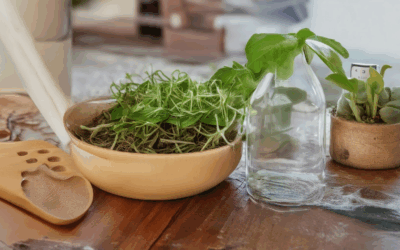Discover how small changes in your daily routine can lead to big impacts on the environment by exploring eco-friendly alternatives that promote sustainability and reduce waste. From household essentials to personal care products, food packaging, and even celebration practices, there are countless opportunities to adopt greener habits. Whether you’re looking for alternatives to plastic, seeking sustainable solutions for everyday items, or aiming to minimize your carbon footprint, this guide offers practical tips and insights to help you make informed choices. By embracing eco-friendly alternatives, you not only contribute to a healthier planet but also create a lifestyle that aligns with global sustainability goals. Join us as we dive into the world of eco-friendly living, uncovering innovative alternatives that make it easier than ever to live a greener lifestyle.
Key Takeaways
- Replace traditional materials with eco-friendly alternatives like Barycentric Cement, Boron Nitride, HDPE, Graphene Oxide, and Copper-Infused Materials for sustainable applications.
- Adopt sustainable practices such as reducing plastic use, conserving water, recycling responsibly, supporting renewable energy, adopting eco-friendly transportation, planting trees, and minimizing energy consumption.
- Choose non-toxic alternatives to lead, including tungsten alloys, bismuth, tin, and zinc-based alloys, for safer and more durable industrial applications.

What is a fancy word for environmentally friendly?
Eco-friendly lifestyles often go hand-in-hand with sustainable practices, reducing waste, and minimizing harm to ecosystems. Here are some sophisticated synonyms and related concepts:
- Sustainable : Emphasizing long-term environmental balance and responsible resource use.
- Green : Relating to environmental conservation and eco-conscious actions.
- Eco-conscious : Involving awareness and consideration for environmental impacts.
- Responsible : Pertaining to ethical and environmentally sound behavior.
- Environmental Stewardship : The act of caring for and managing the environment responsibly.
- Biofriendly : Safe and beneficial for biological systems and environments.
Eco Planeta Verde is committed to promoting these principles through our resources and guides. Explore our website to discover more ways to adopt eco-friendly habits and make a positive impact on the planet. Visit us at Eco Planeta Verde to learn more about sustainable living and green lifestyle choices.
Are There Eco-Friendly Alternatives?
Eco-friendly alternatives are everywhere, and choosing them can make a big difference for the planet. Here’s a curated list of sustainable options across various aspects of daily life:
Food and Beverage
- Organic Coffee and Tea: Grown without synthetic fertilizers or pesticides, these options promote biodiversity and reduce chemical use.
- Bulk Food Purchases: Reduce packaging waste by buying grains, nuts, and other staples in bulk.
- Plant-Based Meats: Less resource-intensive than traditional meats, these alternatives lower environmental impact.
- Reusable Water Bottles: Skip single-use plastics and opt for durable, BPA-free bottles made from sustainable materials.
Home Goods
- Reusable Shopping Bags: Avoid single-use plastic bags by carrying canvas or hemp bags to the store.
- Sustainable Cleaning Products: Choose biodegradable detergents and eco-friendly cleaning kits to minimize toxicity and waste.
- Energy-Efficient Appliances: Invest in appliances with high energy ratings to reduce power consumption over time.
- Recycled Household Items: Opt for furniture and utensils made from recycled materials to reduce demand for raw resources.
Personal Care
- Biodegradable Toothbrushes: Replace conventional toothbrushes with compostable options made from natural materials.
- Sustainable Skincare: Look for products containing natural ingredients and packaged in recyclable containers.
- Compostable Wipes: Use wipes made from plant-based materials that break down quickly in compost piles.
- Eco-Friendly Deodorants: Choose deodorants free from harmful chemicals and packaged sustainably.
Transportation
- Public Transportation: Reduce carbon emissions by relying on buses, trains, or bikes for commuting.
- Electric Vehicles: Consider electric cars or scooters for low-emission travel.
- Car Sharing Services: Share rides to cut down on vehicle usage and fuel consumption.
- Walking or Cycling: Opt for active transportation whenever possible to reduce reliance on fossil fuels.
Clothing and Textiles
- Organic Cotton Clothing: Made from sustainably grown cotton, these items are better for the environment and fair trade practices.
- Secondhand Clothing: Shop at thrift stores or online platforms to reduce textile waste and support local economies.
- Sustainable Fabrics: Look for fabrics like Tencel, bamboo, or recycled polyester to minimize environmental impact.
- Eco-Friendly Dyes: Choose clothing dyed with non-toxic, water-safe dyes to reduce contamination risks.
Final Thought
Living sustainably doesn’t mean sacrificing convenience or style. By making small changes in our daily habits, we can significantly reduce our environmental footprint. Remember to always check product labels and supports brands that align with your values. For more tips and resources, visit Eco Planeta Verde .

How Can I Be 100% Eco-Friendly?
To achieve a more eco-friendly lifestyle, consider implementing these comprehensive strategies:
- Sustainable Transportation : Opt for public transport, cycling, or carpooling to reduce reliance on fossil fuels. Consider electric vehicles or scooters for lower emissions.
- Eco-Friendly Diet : Adopt a plant-based diet rich in fruits, vegetables, grains, and legumes. Reduce meat consumption and support sustainable fishing practices. Compost kitchen scraps to enrich soil and reduce waste.
- Energy Efficiency : Install high-efficiency appliances and LED lighting. Seal homes to conserve energy and install solar panels for renewable energy.
- Waste Reduction : Practice zero-waste habits by using cloth menstrual products, reusable containers, and eco-friendly cleaning supplies. Recycle and compost effectively to minimize landfill contributions.
- Support Sustainable Practices : Purchase Fair Trade products, locally sourced foods, and organic items. Buy second-hand goods and support ethical businesses.
- Conservation of Resources : Fix leaks, install low-flow fixtures, and rainwater harvesting systems. Conserve water and electricity use.
- Environmental Advocacy : Engage in environmental causes through donations, activism, or volunteering. Promote sustainability in your community.
- Wildlife Habitat : Plant native vegetation to support local wildlife and reduce water usage. Create bird feeders and bug hotels to encourage biodiversity.
- Reduce Electronic Waste : Repair devices before disposal and recycle electronics responsibly. Donate unused gadgets to those in need.
By integrating these practices into daily life, one can significantly contribute to environmental sustainability, moving closer to a 100% eco-friendly lifestyle.

Environmentally Friendly Alternatives to Lead
Lead has traditionally been used in various applications due to its density and durability, but its environmental impact has led to a search for sustainable alternatives. Here are some eco-friendly options:
- Barycentric Cement: A lightweight yet strong material made from natural minerals, it serves as a great alternative in construction and radiation shielding.
- Boron Nitride: Known for its high thermal stability and insulating properties, it’s widely used in electronics and industrial applications.
- High-Density Polyethylene (HDPE): While not as dense as lead, HDPE is a durable and recyclable plastic suitable for various structural uses.
- Graphene Oxide: This innovative material combines flexibility with conductivity, offering unique properties for lightweight shielding solutions.
- Copper-Infused Materials: These materials provide excellent thermal and electrical conductivity while being significantly lighter than lead.
What is the most eco friendly thing?
Eco friendliness encompasses a variety of sustainable practices that minimize harm to the environment while maximizing benefits for human life. Here are some of the most impactful ways to contribute to eco-friendliness:
- Reduce Plastic Use: Minimize single-use plastics by opting for reusable items like water bottles, shopping bags, and food containers.
- Conserve Water: Install low-flow fixtures and consider rainwater harvesting systems to reduce your household’s water usage.
- Recycle Responsibly: Ensure all recyclable materials like paper, glass, and electronics are properly collected and processed.
- Support Renewable Energy: Switch to solar, wind, or geothermal energy sources to power your home or business sustainably.
- Adopt Sustainable Transportation: Use public transportation, bike, or walk whenever possible to reduce carbon emissions.
- Plant Trees: Tree planting helps combat deforestation and improves air quality, making it a simple yet effective eco-friendly activity.
- Minimize Energy Consumption: Opt for energy-efficient appliances and turn off lights and devices when not in use.
Eco friendliness is not just about individual actions—it’s about collective efforts to create a healthier planet for future generations. By incorporating these practices into our daily lives, we can work towards a more sustainable world.
For more resources and guides on eco-friendly living, visit our Eco Living Guides section.

Non-Toxic Alternatives to Lead
Lead is a heavy metal that poses significant health risks, particularly due to its toxicity. However, there are several non-toxic alternatives that can be used in various applications. One popular option is tungsten alloys , such as those produced by Wolfmet, which are both durable and safe for human exposure.
Additionally, materials like bismuth , tin , and zinc-based alloys are also considered safer alternatives to lead. These materials offer comparable strength and performance in many industrial applications while minimizing environmental and health hazards.
Eco Planeta Verde advocates for sustainable living solutions, and choosing non-toxic materials aligns with our commitment to reducing harmful substances in everyday products. By exploring alternatives like tungsten alloys, bismuth, tin, and zinc-based alloys, we can contribute to a healthier environment and safer workplaces.
For more information on sustainable materials and eco-friendly alternatives, visit our resource library at Eco Planeta Verde .
Conclusion
When seeking non-toxic alternatives to lead, consider materials like tungsten alloys, bismuth, tin, and zinc-based alloys. These options provide excellent performance while posing minimal health risks. Visit Eco Planeta Verde to learn more about sustainable living and eco-friendly product choices.




0 Comments